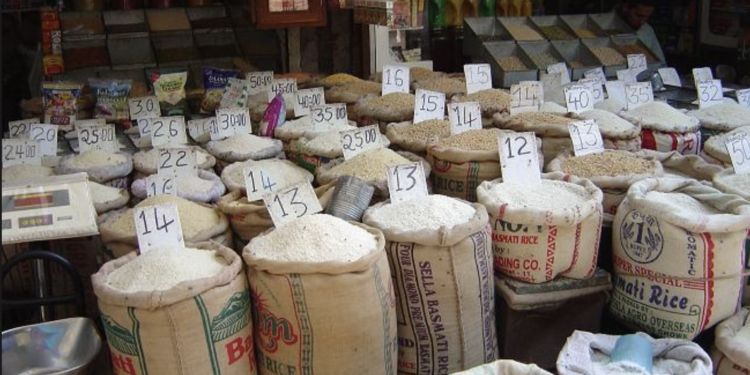“Need President’s Iron Fist: Cracking Down on the Rice Mafia!”

In recent weeks, the Sri Lankan public has been grappling with a growing crisis: the shortage of Nadu rice. As prices soar and shelves remain empty, people are left to question why something as basic as rice, a staple food for millions, has become so scarce.
One person who recently addressed the issue is Dudly Sirisena, one of the wealthiest men in Sri Lanka and the brother of former president Maithripala Sirisena. In a recent media interview, Sirisena attempted to shift the blame for the rice shortage, claiming it was not the fault of the current government but rather the failures of previous administrations including, of course, the government led by his own brother.
But Sirisena’s comments raise more questions than answers. Sri Lankans today are struggling with basic questions: Where can we find affordable rice, coconut, and eggs? Why has the cost of living become unbearable for so many families? In his interview, Dudly Sirisena tried to deflect responsibility by boasting that his company produces over 70% of Keeri Samba, a variety of rice favored by the middle and upper classes. He also claimed that his company is not responsible for the shortage of Nadu rice, as they produce just 10% of that variety. Instead, he pointed fingers at other rice producers, accusing them of hoarding Nadu rice to sell to poultry farms and beer manufacturers, further exacerbating the shortage.
Yet, this argument does not hold up under scrutiny. According to data from Sri Lanka’s Agriculture Department, during the last Yala season (May to August), paddy producers harvested 77% Nadu rice, 12% Samba rice, and 11% Keeri Samba. If Nadu rice is so scarce, then why is it that 77% of the harvest was supposed to be of that variety? Moreover, the department’s statistics indicate that Sri Lanka produced 145,000 metric tons of paddy in 2023, well above the 137,000 metric tons required to meet the country’s annual rice consumption. In fact, there should have been around 8,000 metric tons of surplus rice. Yet, despite these numbers, Sri Lankans are left wondering where all the rice has gone.
The situation becomes even more perplexing when we look at the larger picture. The country’s two main agricultural seasons, Yala and Maha, should have ensured that enough rice was harvested to meet demand. The Yala season typically runs from May to August, while the Maha season lasts from September to March. These cycles align with the monsoon seasons and are critical for rice cultivation. If anything, Sri Lanka should be sitting on a substantial stockpile of rice at this point, especially considering the bumper harvests reported by the Agriculture Department.
This discrepancy begs the question: Where has the rice gone? Dudly Sirisena’s claim that poultry feed and beer manufacturers are hoarding Nadu rice is hard to believe when the numbers don’t add up. Is the paddy being hidden away by a select group of producers, who are artificially inflating prices and exacerbating the crisis for ordinary Sri Lankans?
While it’s understandable that a new government needs time to stabilize the economy, there are limits to how much patience the public can afford. This rice shortage is not just a supply chain issue; it’s a market manipulation problem, and one that must be addressed urgently. The so-called “rice mafia” — those large producers who are controlling the market and driving up prices need to be held accountable.
In the face of this crisis, the government has already taken measures to support farmers in the form of subsidies. The provision of 25,000 rupees worth of fertilizer for farmers is an important step toward increasing agricultural productivity, particularly for paddy farms. Additionally, the introduction of subsidies for irrigation systems aims to alleviate the stress on paddy cultivation, which depends heavily on consistent water supply. These subsidies are funded by taxpayers’ money, and the government has a responsibility to ensure that this support translates into tangible benefits for the public, not for a select group of elites. If farmers have been given the means to produce sufficient rice, then why is the market still in such disarray? It is crucial that these subsidies are used effectively and transparently, to ensure that they are reaching the intended beneficiaries and not fueling the manipulation of the market.
The current administration, led by AKD, has the power to step in and take action. Under the constitution, the government has the legal authority to declare a food shortage, and this is the time to use that power to protect the people. The government can impose a grace period for rice producers to sell any stockpiled paddy to the government at a fair price. If they fail to comply, the government should confiscate the paddy and distribute it to the public at reasonable rates. Such a move would send a strong message to those profiting from the suffering of the Sri Lankan people and would show that the government is serious about protecting ordinary citizens, not the interests of the wealthy few.
If the government is serious about its commitment to the people, this is the perfect opportunity to demonstrate that it stands on the side of the people, not the rice mafia. As the Christmas season approaches and the public’s frustration grows, it’s time for President Disanayake to show his “iron fist.” He has the constitutional authority, the legal backing, and, most importantly, the moral obligation to act.
The people are watching, President Disanayake. Will you rise to the occasion, or will you allow the rice mafia to continue reaping the benefits of this crisis at the expense of millions of Sri Lankans?







